Last updated on November 3rd, 2023 at 01:31 pm
Cost of Kitchen Cabinets
Shopping for kitchen cabinets is always going to be a battle for cost considerations. There are many routes that you can go when looking at the wide variety of materials which directly affects kitchen cabinet cost. Of course, it's not like the old days anymore when you could just buy 100% natural wood. The advancements of cabinetry materials make it easier to choose better and longer-lasting choices. For a little more insight, see the roundup of our favorite cabinet manufacturers and brands including a breakdown on each or check out our article on buying used cabinets here. But when it comes time to purchase or replace kitchen cabinets, the first thing to decide is which materials to choose.
Materials that Affect Cost
Natural wood
The look of natural wood is amazing if you’ve ever seen cabinets and kitchens with incredible wood grains. But unlike most homes, natural wood has certain disadvantages for all sorts of reasons. The main issue is that it often can warp depending on the location where you live. Higher humidity seeps into the wood, making precise inset cabinet doors swell and get stuck. It doesn’t happen to all types of wood but is a concern for those who paid a lot for kitchen cabinets.
Because 100% natural wood is nearly a lost art, these days, expect that custom kitchen cabinets with real wood are going to be expensive. Note that certain stains can’t simulate pricier woods, but if you insist on Oak, Red Oak, Maple, Mahogany, or Cherry. This is not to exclude Hickory or Birch which are also very desirable.
Veneer
Just as it was in the golden age of cabinetry, one of the cost-effective methods for rich people wanting fine cabinets was using a Wood veneer. This allowed for more expensive wood to be used without using full solid pieces. The trick was to slice very thin slats of wood which were then glued onto cheaper wood underneath. If done with care, the resulting look is incredible. This is a practice that is still done to this day by master cabinetry craftsmen.
Though not as often as you might imagine, it is slowly getting phased out in favor of faster-laminating methods. If you decide that a real wood veneer is a good choice for your kitchen, the outgoing cost is very pricy. You also need to have very low humidity because of expansion and veneer cracking issues.
Laminate
One of the more affordable options is the innovation of laminates for kitchen cabinets. There are differences in the surface material that is used that you should know about. But essentially, a laminated cabinet lasts longer than most wood cabinets will. Yet this is not always the case if the glue that is used starts to come loose on the cabinet doors. Often you’ll see edges popping up that need to be re-glued.
Despite the durable surfaces that laminate offers, if the adhesive is second-rate, you’ll have delaminated cabinets that are a headache to deal with.
Melamine (MDL)
This is the most common of all the laminates that involve a process where a printed plastic is bonded to plywood, pressed fiberboard, or MDF (medium-density fiberboard). Although some brands have been bonded with adhesives, thermally-fused melamine uses a sheet of melamine and formaldehyde to bond a sandwich layer between the printed section and the plastic laminate.
The downside to melamine is that it can chip rather than crack leaving the undersurface exposed. Once again, the adhesive used to attach the melamine to wood is subject to lifting if the glue is not of great quality.
Thermofoil
Thermofoil is actually a vinyl that is heated and then attached to an MDF core. The advantage of Thermofoil is having both the texture of wood added to the surface. Then again, there is no shortage of foils that have smooth or textured surfaces. The vinyl is easy to clean and lasts for years but also has disadvantages involved.
It also chips and will be an eyesore if it does. The MDF core can also be prone to swelling from moisture. But from a budget point of view of cabinet costs, it’s very affordable and can significantly lower kitchen cabinet costs – it’s more often sold commercially.
Plastic laminate (HDPL)
Similar to melamine this is also called high-density plastic laminate and is much thinner than melamine. It’s a cost-saving solution that comes in a variety of more colors than melamine. It also is used more often for exterior cabinet surfaces rather than how melamine is used. It can be formed over any kind of cheap board including MDF, particleboard, and plywood using adhesives.
It will also chip just like melamine and Thermofoil, and after a while, it will need to be replaced. Because it’s cheaper in this category, it won’t cost much for a cabinet door replacement.
4. Polyurethane
Perhaps the easiest to care for, Polyurethane cabinets are sprayed rather than covered with a plastic coating. There are no visible layers so each piece will not chip like other laminates. It goes through a series of three layers so each layer encloses a single piece of formed pressboard, MDF, plywood, or particleboard. The only downside is that it cannot reproduce wood grain textures, so only colors are offered.
Depending on the surface spray technique used, it can be glossy smooth to somewhat textured. Since each piece is completely sealed, it will not have warping issues if you live in high humidity issues.
Sandwich materials under the surface
Secondary materials like MDF, particle board, plywood, medium-density fireboard, etc. are relatively inexpensive depending on which you choose to have as a sub-surface wood. Since these woods are sandwiched inside coverings, the end cost of your kitchen cabinets will depend on the material that is attached to the surface. All of these wood composites are pretty common so it depends on where your kitchen cabinets are made that determines the final composite.
Construction Methods that Affect Cost

Solid wood is one of the few natural materials that have a variety of construction techniques. These techniques can also be applied to any kind of cabinet construction and have a direct effect on the end price. Keep in mind, you’ll need to earmark a budget for cabinet installation as well.
Dowel
One of the cheapest methods of attached pieces of wood together and has holes drilled into each adjoining section that is glued into place. The dowel is the only strong point of drawers or corner sections on cabinet frames and doors.
Rabbet
This is an edge that has a channel that is cut into a piece of wood that has a lip where adjoining wood ends sit squarely. This is a bit more effective but it does need gluing or nails that attach pieces at each end. The downside is that attached ends will have wood grain issues.
Dovetail
The most effective method for attaching and gluing wood pieces together. Each section will have a channel that has a dovetail shape that is made from a router machine bit. There is a male and female connection that attach together. This is the most expensive of cabinet costs since it requires more work while creating each dovetail form and channel.
Cost of Cabinets
Without a doubt, the price of kitchen cabinets are dictated by the material that is used. Natural wood will always be more expensive if the wood is exotic or rare. Then again, there are cheaper woods that can be substituted and be stained to look more expensive wood. This will apply to natural wood veneers that cover composite wood as well. When it comes to the cheaper laminates, this is when you immediately see a more affordable price tag drop.
Linear feet is another aspect that plays a defining factor for cost is the price you pay per linear foot. Kitchen cabinets are estimated using linear feet to give an overall estimate of the cost you’ll pay. For example, you will need to measure how much cabinetry is being created. The length and width and the height are calculated and then you can better figure out the final price tag.
Let’s take a look at the average cost for various types of cabinet construction, from stock cabinets to fully custom kitchen cabinets. These cost estimates do not include cabinet installation.
Custom Kitchen Cabinets – Starting at $20,000
THE TOP TIER OF CABINETRY
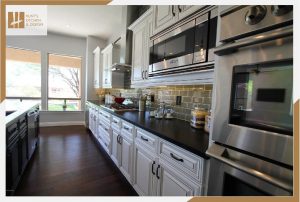
Custom Cabinetry by Hunt’s Kitchen Design
Solid wood (high quality)
On average the price will always be on a sliding scale somewhere between $5,000 to $25,000 for kitchen cabinetry inside a 10′ x 10′ room. This comes out to be an average of $500 or more per linear foot. More expensive wood such as Cherry, Oak, Red Oak, Maple, Mahogany, Hickory, and high-end Birch
Wood veneer
This will be an average cost that ranges from $2000-$15,000 for cabinets inside a 10′ x 10′ kitchen. This is once again averaging $500 or higher regarding the type of wood used.
Type of construction used
You can figure that any of the high-end cabinets will use dovetail joints inside the drawers. There can also be combined with other techniques used such as rabbet and dado joints. Expect that any kind of joints that are used will be intended to stay together for several years. This can add to the cost, but not more than $15,000-$25,000 in all.
Semi-custom Cabinets –$15,000 to $25,000
MID-RANGE PRICE POINT
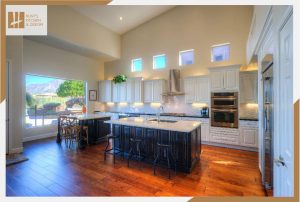
Simi-Custom Cabinetry by Hunt’s Kitchen Design
Solid wood
For this mid-range level, the cost will be somewhere on average between $2,000 to $12,000 when putting cabinets into a 10′ x 10′ kitchen. This puts the average at $300 to $400 per linear foot if you are using quality low-end solid wood. These woods can include Pine, Poplar, Bamboo, and cheap Birch that is fine for mid-range solid woods.
Wood veneer
Using the same woods as a veneer on top of a base wood like MDF or plywood can run $2,000 to $10,000 inside the same size kitchen. This is roughly $300 per linear foot and will also include the method of construction when it’s put together.
Type of construction used
Mid-range semi-custom cabinet costs are still very good in quality because they have a solid wood. Considering the style of cabinetry and level of the profession, you will see higher estimated costs for construction and staining. This is due to wanting a fancier wood look similar to the pricier wood types. Add at least $2,000 to $3,000 to the total estimate price for these services.
Stock Cabinets – $8,000 to $15,000
BUDGET BUYS
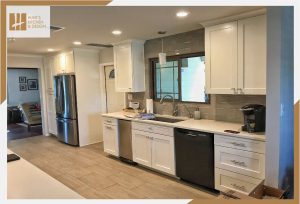
Thermofoil
You can expect at least $60 to $200 per linear foot for using Thermofoil cabinetry. This will give you an overall estimate worth $2,000 to $5,000 if you have a kitchen that 10 x 10 feet. Thermofoil and the cabinets listed below in this section are consider average kitchen cabinets.
Melamine
As an average, the estimate you can expect for Melamine based cabinets average cost is between $1,000 to $4,000 with a $60 to $150 per linear foot. Because the melamine is thicker, special adhesives that are used may increase the cost so it stays attached for longer periods.
Plastic laminate
This is going to cost no more than $1,000 to $4,000 and is very similar to Melamine. This all comes down to the price difference of $60 to $150 per linear foot. Plastic laminate has many color selections but no choice of wood grains.
Polyurethane coated
This is an emerging technology that is not as popular in the US just yet. In Australia, this is incredibly popular because of the wide range of colors and durability. You can estimate that stock kitchen cabinets costs will run $2,000 to $3,500 for a polyurethane sprayed surface. This comes down to $60 to $120 per linear foot on average. If you can find a cabinet supplier that carries polyurethane-coated cabinets, you might find a very good deal on these average kitchen cabinets.
Cost of Frames & Doors
Aside from the materials that go into kitchen cabinets, the style of cabinets can also be influenced by their cost. This can be due to the construction and the added materials fitted into cabinet doors or their frames. Here is a closer in-depth look at the various types of cabinets and their expected costs.
Within the standard types of cabinet door construction includes Shaker, Slab and Flat panel, Raised panel, Recessed panel, and Inset panel doors. All of these types of doors that attach to their frames can be constructed from real wood, veneer, or from various laminates attached to MDF cores. The average cost for a 10 x 10 kitchen starts around $2000-12,000 for wood or veneer and increases whenever semi-custom and custom cabinets are produced.
These cabinets can also cost upwards of $100 for stock frames and up to $1200 per linear foot for custom work. It obviously becomes more expensive with custom frame designs and the type of wood that’s used. This will all depend on the type of material that’s used and the number of linear feet that are required. On average, it’s always cheaper to choose stock cabinets that will offer lower costs.
When it comes to specialized cabinet frames, these must also be addressed by the type which they are typically called. Here is what to expect with these selected frame styles. Once again, the choice of wood frame that is used is not limited to stock, semi-custom, or custom fabricated cabinetry. Because the chosen materials that are used for each of these frames will influence price, some items will be pricier than others.
Framed glass
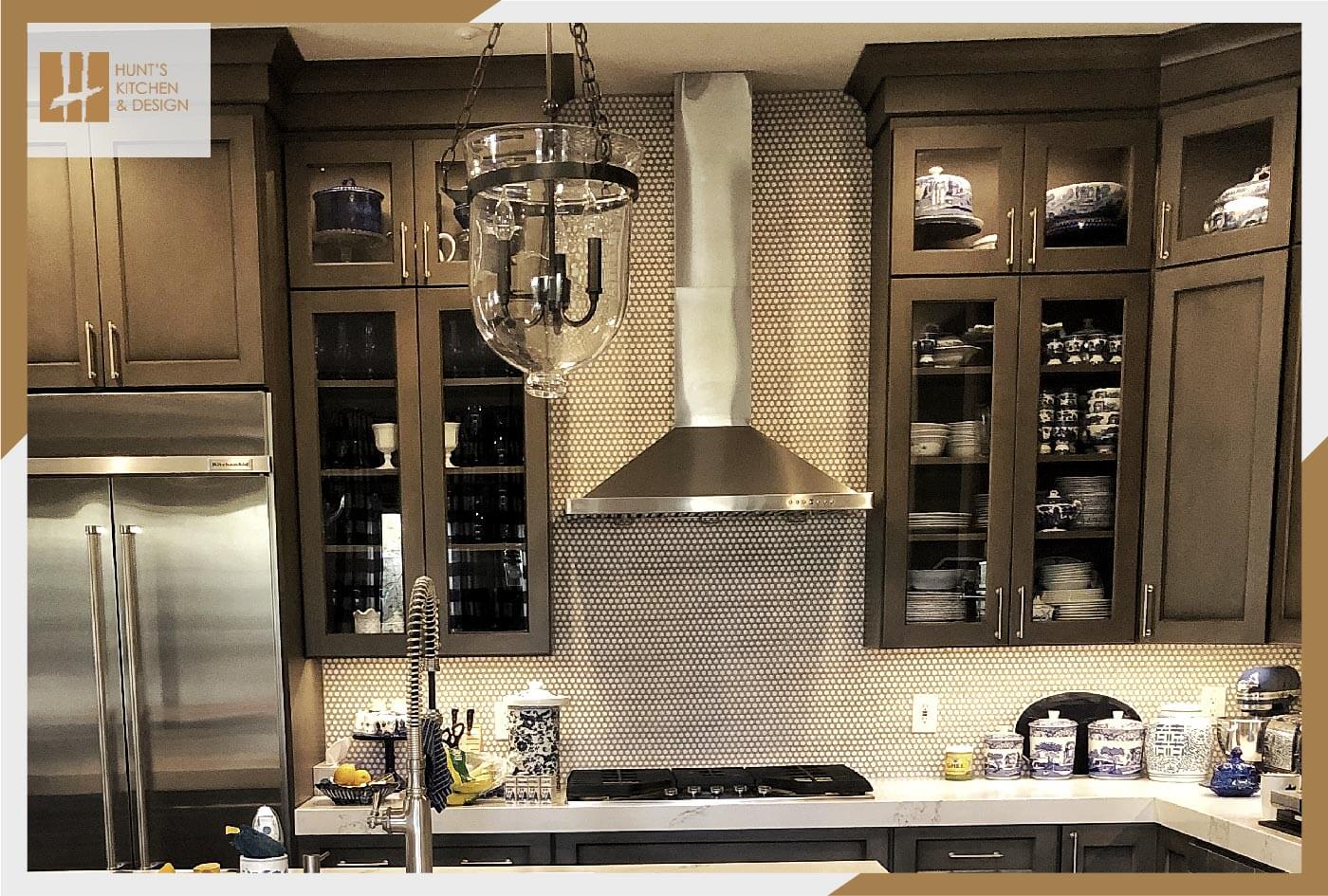
Frames that allow glass within a cabinet panel include Open frame panels and Mullion frame panels. The difference between these two is simply the method of how glass is being displayed. Open frames have a single pane of glass while mullion frames have several sections of glass framed within a frame. Glass will increase the total cost when it starts to include frosted and etched surfaces. Textured glass is also another price consideration.
The base cost for anything glass is around $100 per cabinet with an average of $9-12 per square foot. This cost goes up when using leaded glass, frosted or etched glass, and special types of glass patterns and textures -when they are offered. Not to forget that glass thickness and/or tempered or un-tempered glass is used. Needless to say, the extra cost of creating mullion patterns will have a direct influence on framed cabinet doors.
Mullion frame
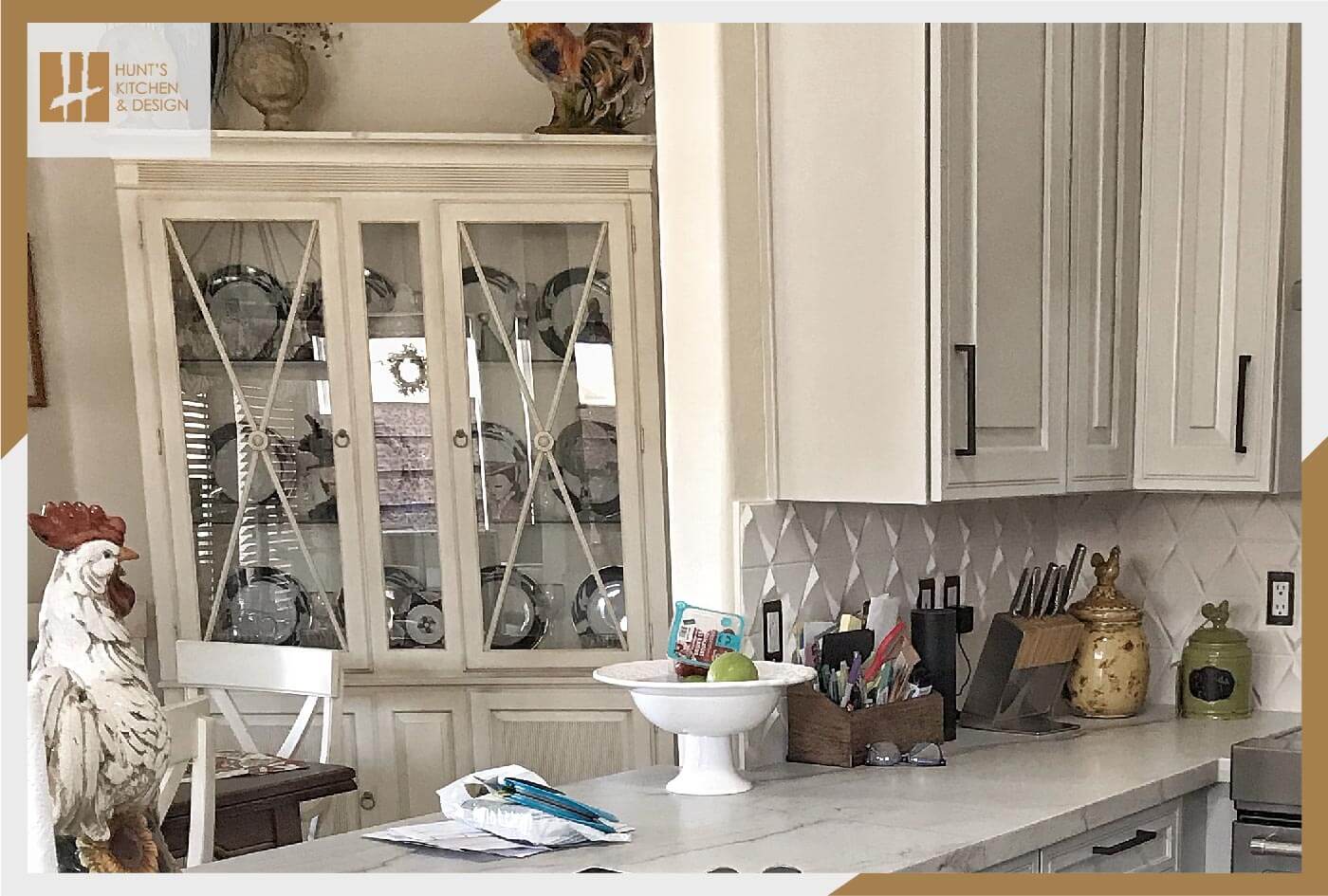
Mullion frames come in a variety of patterns that begin with simple straight frames or more elegant curved mullion frame patterns. The cost to produce mullion patterns will become increasingly more expensive to cut out glass patterns and install them within a mullion frame design. Another more cost-friendly option is fabricated mullion insert panels that sandwich glass within a frame giving the illusion of individually framed glass pieces.
The cost differences start at $50-200 per cabinet door depending on the level of stock and custom design needed.
Open frame
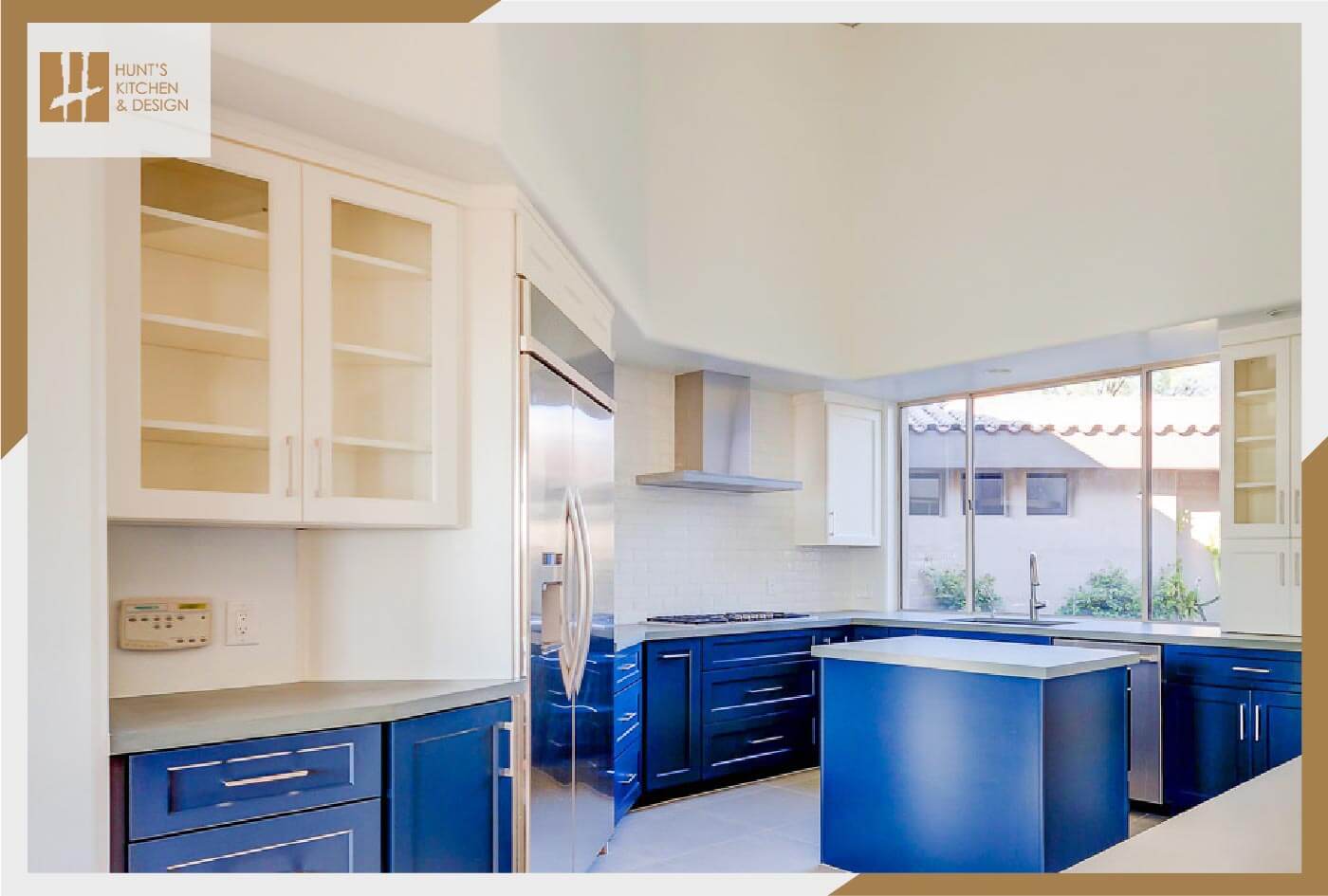
Open frame glass doors are dramatically cheaper than mullion doors due to their simplicity. The average cost per door will be half the cost starting with $50-100 per cabinet door using ordinary door glass. This cost goes up whenever the type of glass includes frosting, etching, or textured glass surfaces. Keep in mind that the glass thickness and type of glass have an impact on price likewise.
Open frame cabinets will also allow for nearly any kind of material to be inserted besides glass. They can include metal, stained glass, or mullion patterns that support a combination of any or all of these materials. The cheaper versions that are coming from stock selections are better for DIY projects where they can be finished at home using a variety of colors, paints, or stains.
Beadboard panel
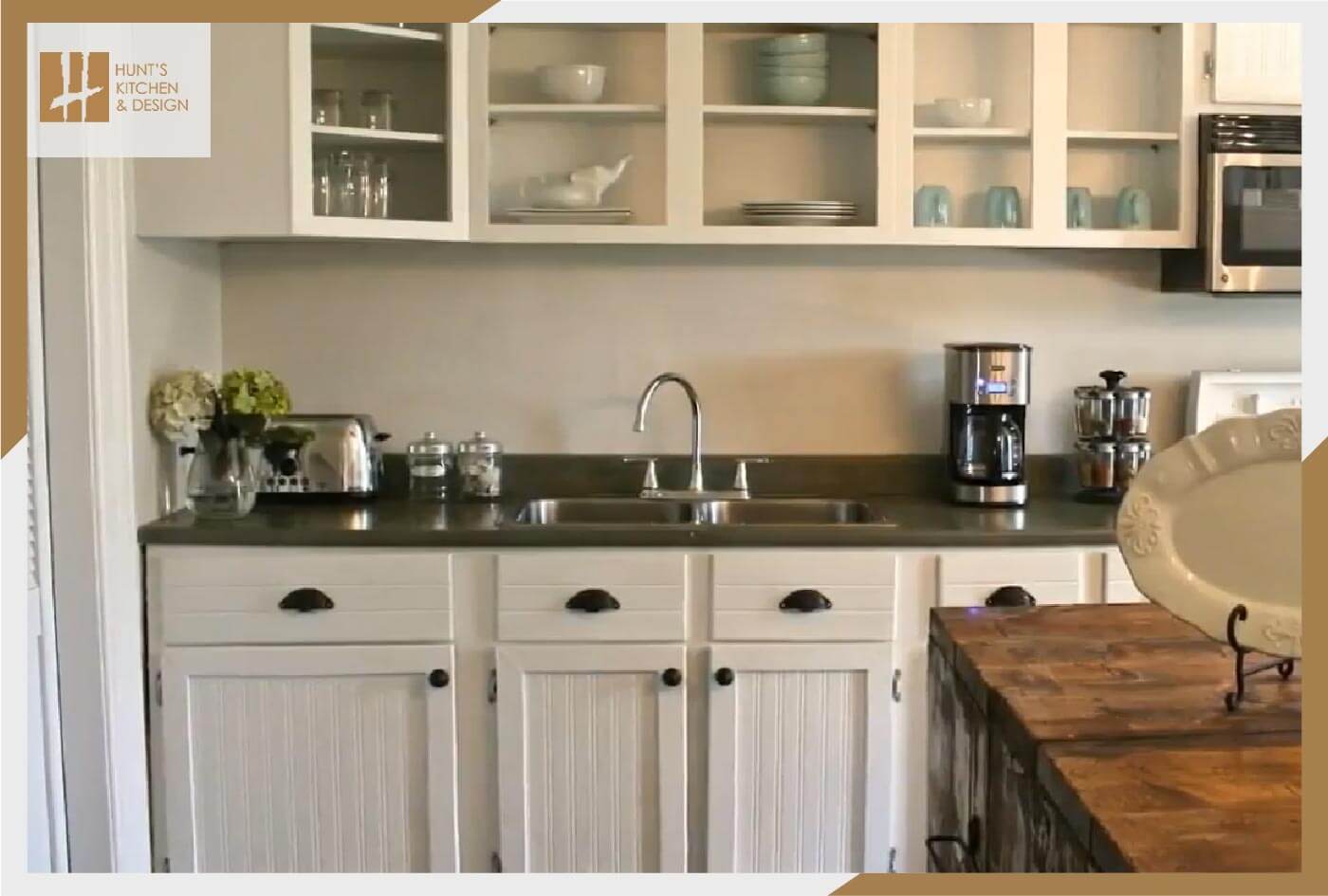
With regular stock beadboard panel frames, the overall cost will be $15-18 for unpainted wood. Finished wood surfaces are more expensive with $20-30 per panel door, but once again can go up in price depending on the type of wood used. The price will be more competitive with stock frames or made from materials that are composite and laminated with veneer.
Louvered panel
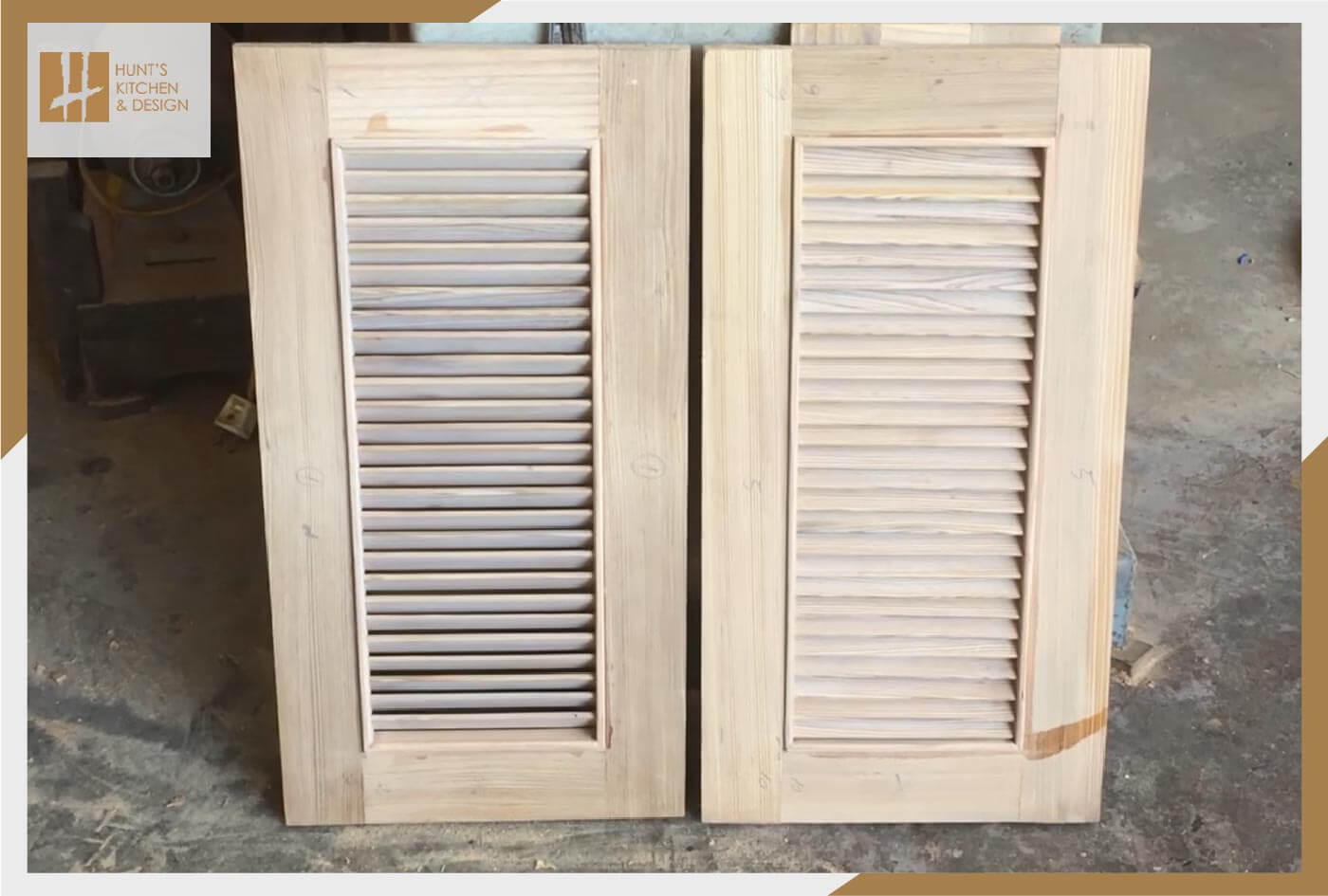
The look of louvered panel doors is always attractive but also will have a cost difference depending on the complexity and design of louvered cabinet doors. The average cost per door ranges between $70-90 per cabinet panel. If they are constructed from MDF, the cost will be a bit cheaper, so obviously, the type of wood desired will raise the cost depending on the type of wood used.
Framed Vs Frameless cabinets
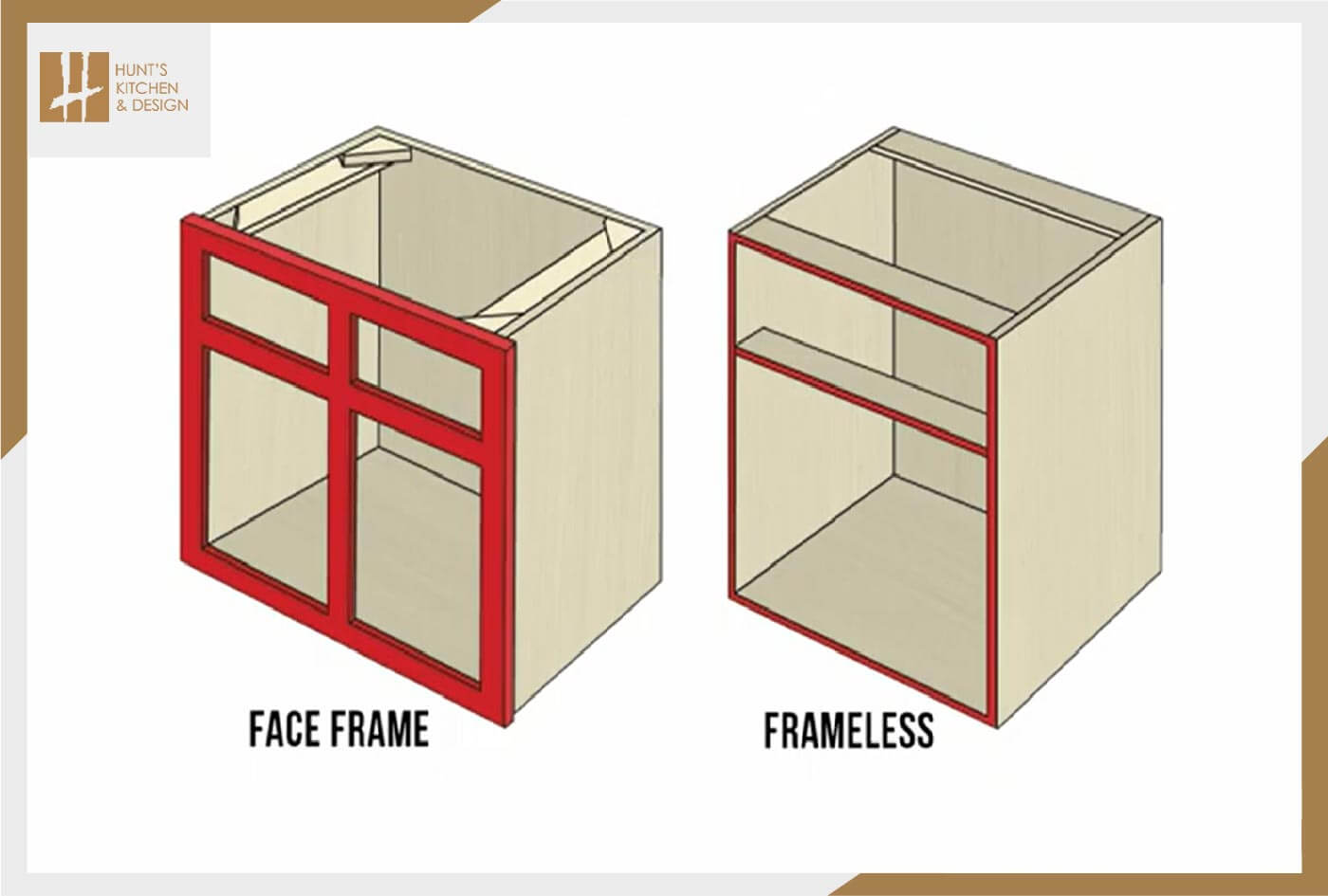
Special cabinets such as frameless panels are slightly more expensive since they need frames that help hide the inside cabinet frame. Naturally, this style will be slightly more expensive and also directly related to the cabinet door construction and types of wood that are used. Framed cabinets can run $5000-20,000 for completed cabinets, while frameless are $6000-20,000 depending on the materials used.
These types of frames do not exclude how a cabinet door frame is attached aside from the fact they are both created to face outwards with no visible hinges. Since the hinges are inside the frame and largely unseen, framed cabinets have borders while frameless cabinets are positioned directly next to adjoining cabinet doors.
Perforated metal frames
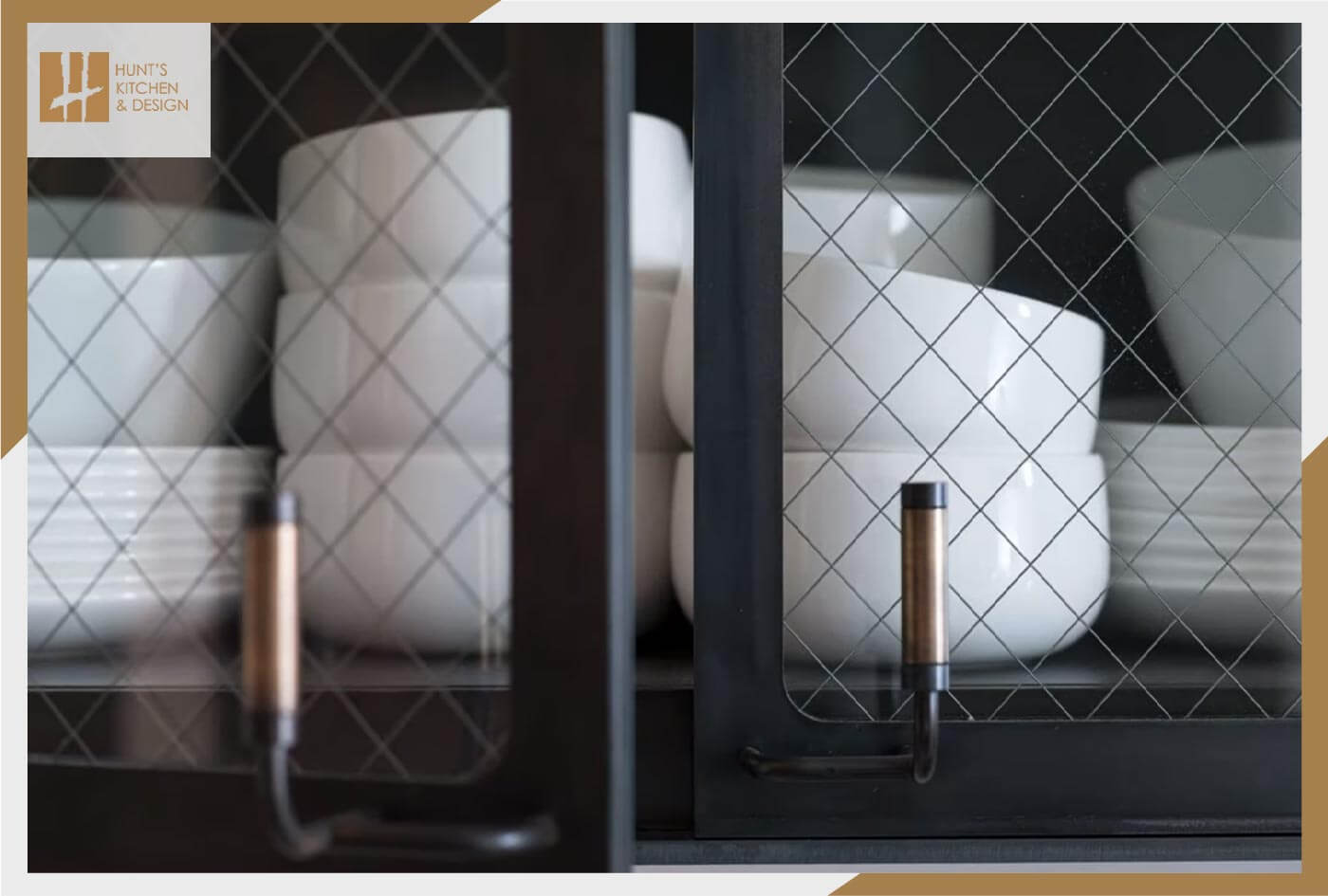
This is included since the option to purchase open frame panels can allow for perforated metal to be added within a frame, creating a DIY look for your kitchen. This type of metal comes in many patterns and is usually sold at home improvement centers or from boxing manufacturers. Some styles include adding chicken wire inside these frames that are good for farmhouse and rustic kitchen cabinets.
The cost of open-frame panels starts at $50-100 just for the frames and materials used, so the extra cost of perforated metal all depends on the type of metal that is bought elsewhere and installed into these frames.
How Much Do Cabinets Cost?
How much do kitchen cabinets cost on average?
Last updated on November 3rd, 2023 at 01:31 pm
You can expect to spend between $4,000 and $20,000 for a complete kitchen cabinet set. It really depends on the materials you decide to use that will set the price. And if they need to be hand made or you can buy them from places like a large home improvement center.
What factors affect the cost of kitchen cabinets?
Last updated on November 3rd, 2023 at 01:31 pm
The largest factor is definitely the materials that the cabinets are made with. If you need solid teak or oak cabinets, the cost will be dramatically higher than if you’re just using treated particleboard. But this also effects the life of the cabinet as well. And then there is size and if this is a customer built or off the shelf type cabinet.
Can I save money by buying pre-fabricated cabinets?
Last updated on November 3rd, 2023 at 01:31 pm
Yes, pre-fabricated or stock cabinets are typically the least expensive option, as they are mass-produced and sold in standard sizes. But there are drawbacks to these types of cabinets. It’s usually impossible to add anything custom and anything you want changed will need to be done after you receive the cabinets. And these type of cabinets also have a shorter lifespan than custom made ones.
What is the difference between stock, semi-custom, and custom cabinets?
Last updated on November 3rd, 2023 at 01:31 pm
Stock cabinets are pre-made, standard-size cabinets that are sold at a lower cost due to their mass-production. Semi-custom cabinets offer some customization options, such as size adjustments or specific finishes, but come at a higher cost. Custom cabinets are made to order and offer the most customization options, but also come at the highest cost. So if you can find pre-made cabinets that suit your needs, save some money and get them. Or if you really want something decent, go for the semi-custome or custom ones.
Can I reuse or recycle my old kitchen cabinets during a renovation?
Last updated on November 3rd, 2023 at 01:31 pm
Yes, you may be able to reuse your old kitchen cabinets during a renovation, especially if they are the solid wood types. These types of cabinets can be easily sanded down to take on new stains and finishes and often look better than anything new. You can also donate or sell them, or consider recycling them through a local recycling program.

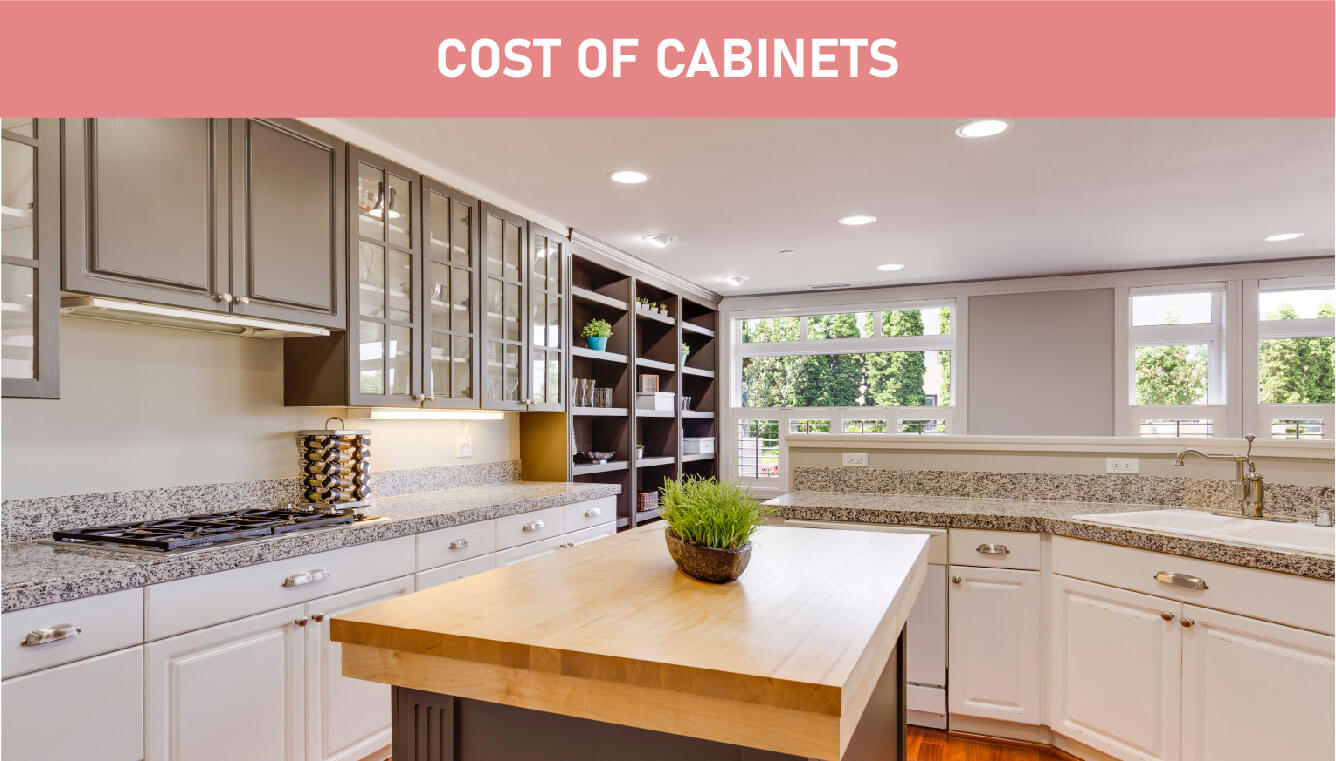
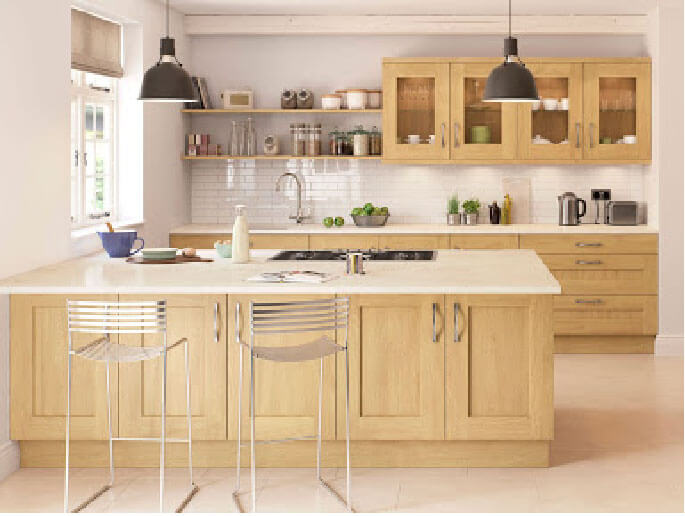
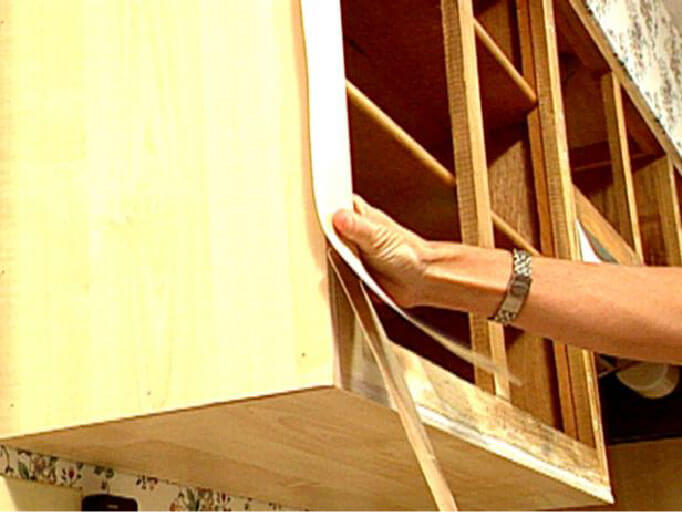
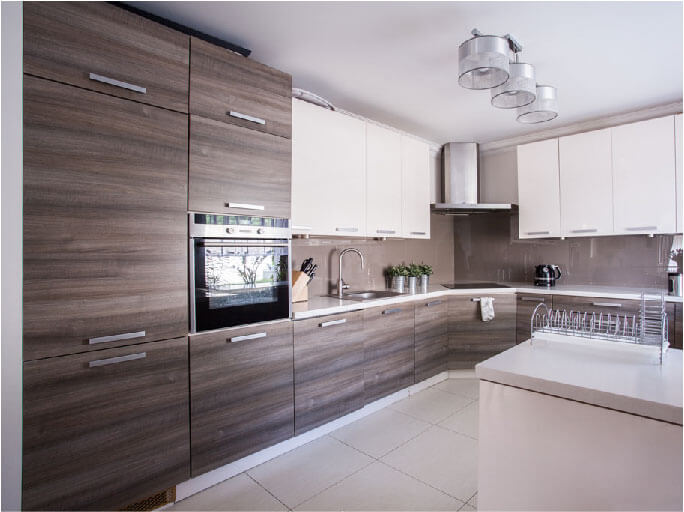
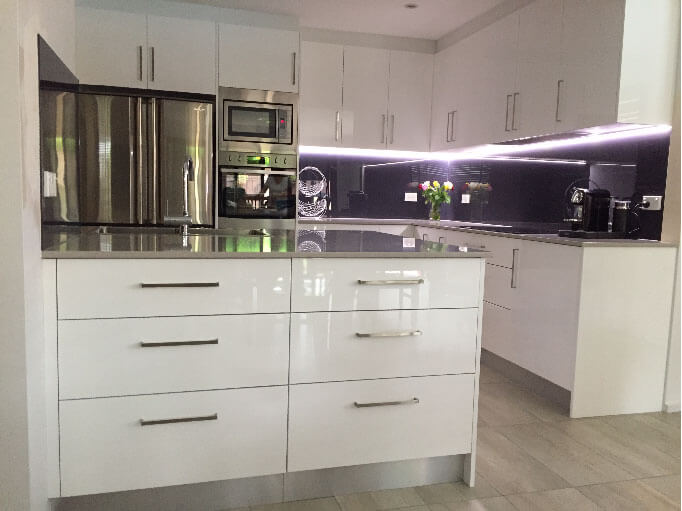
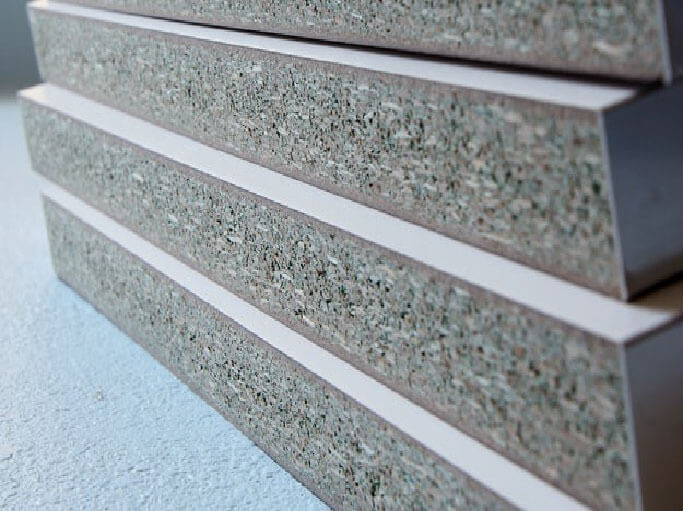
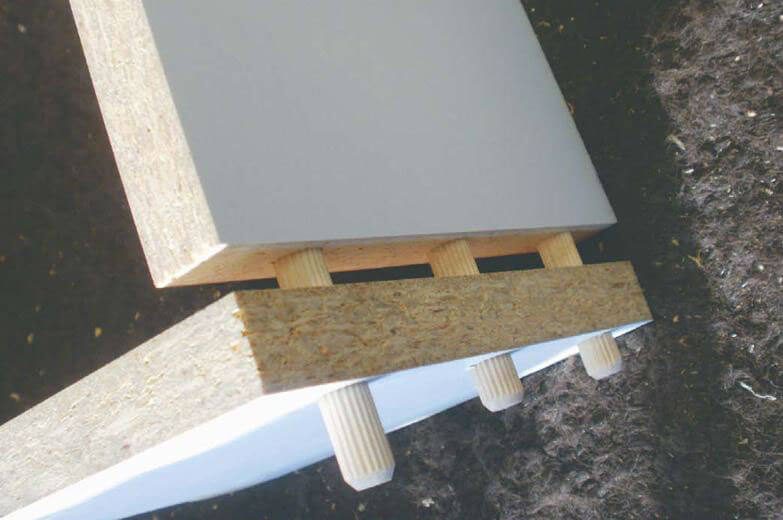
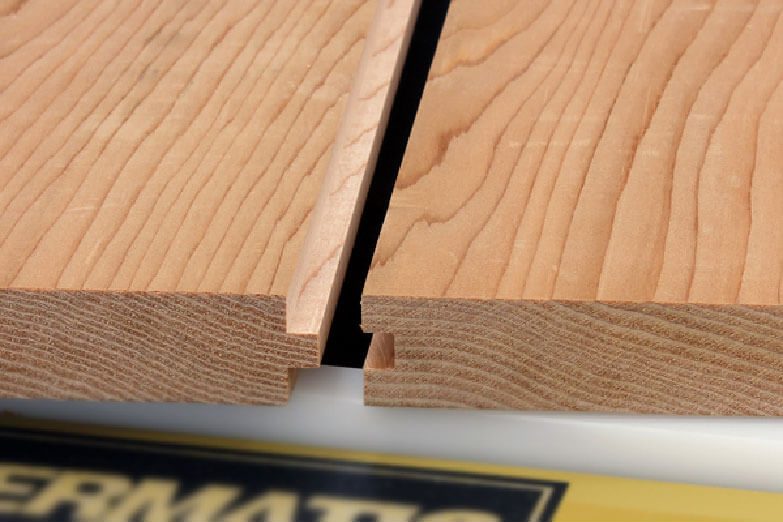
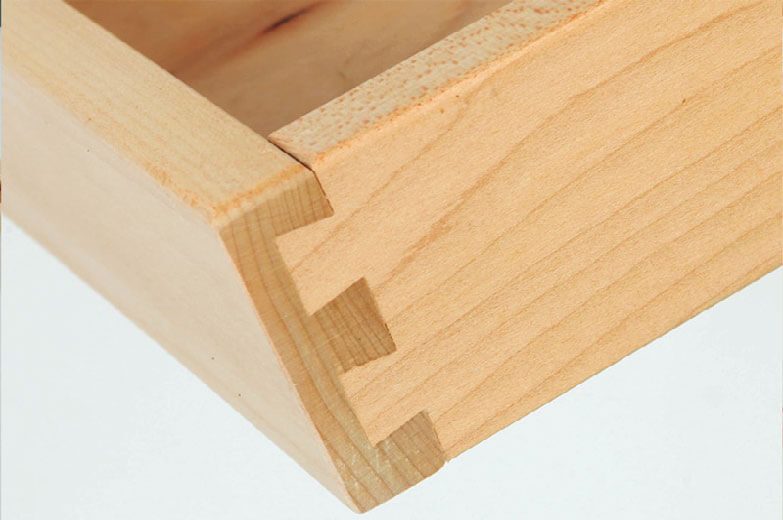
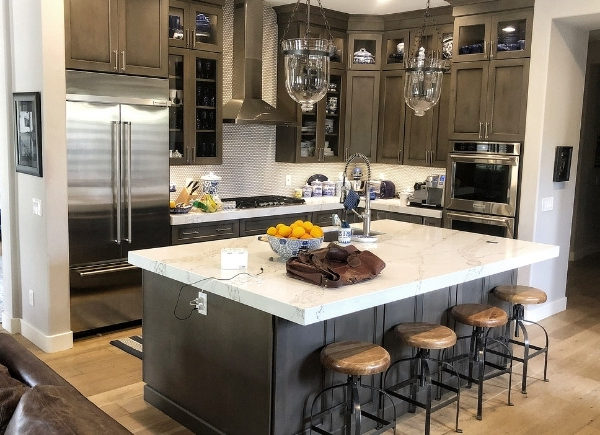
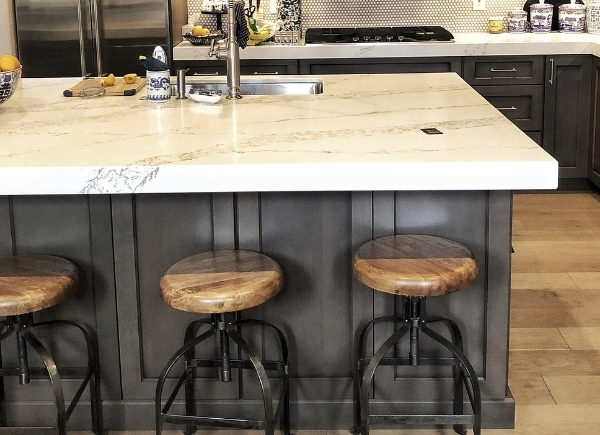
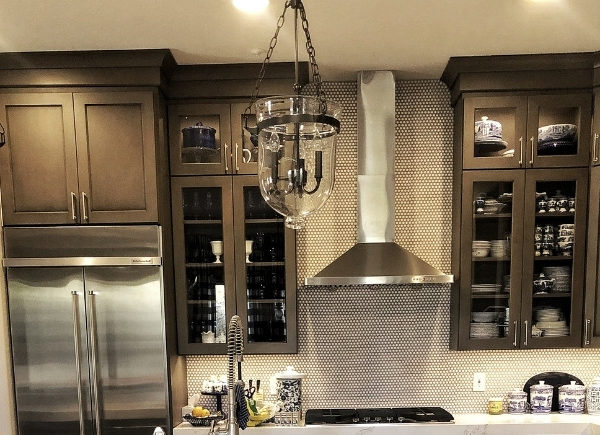
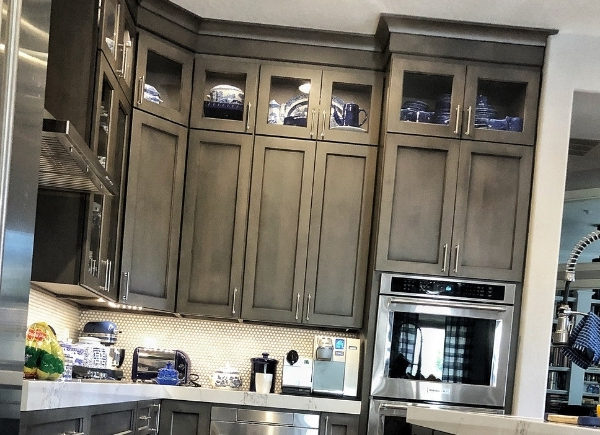
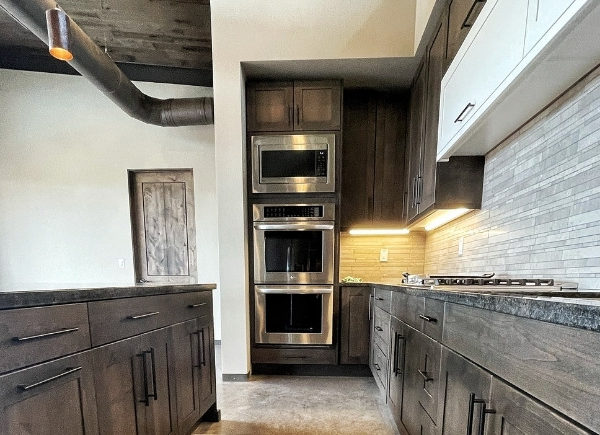
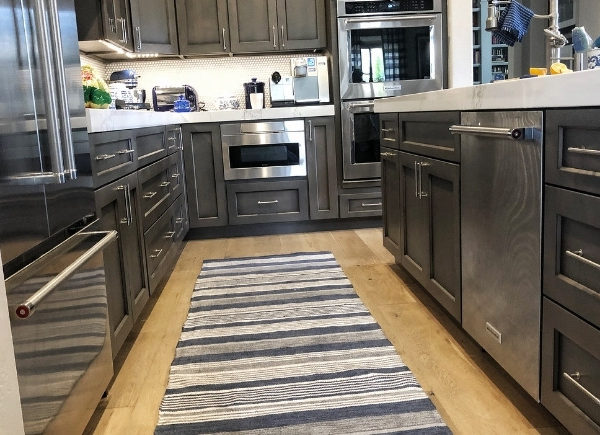
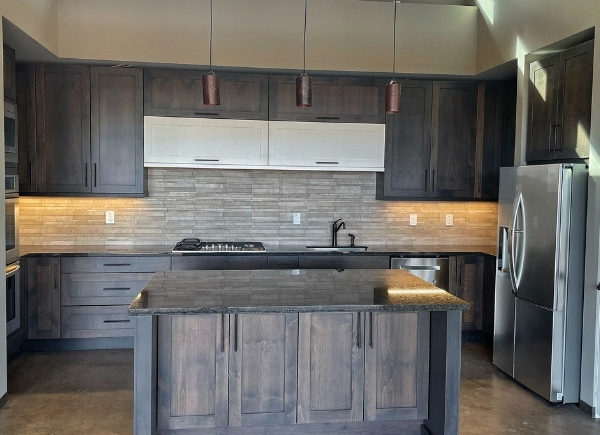
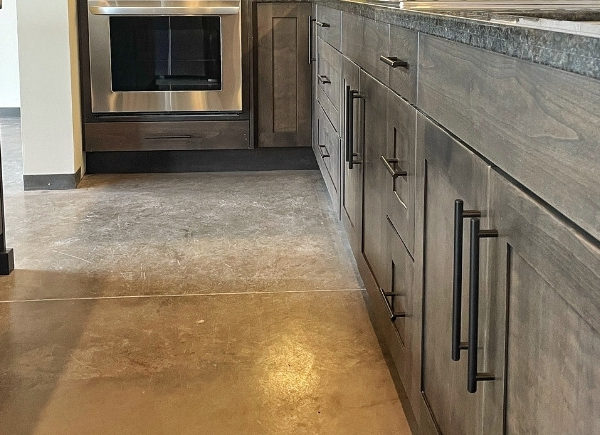
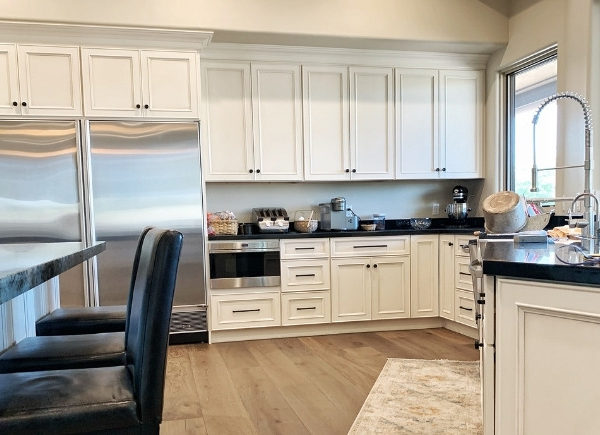
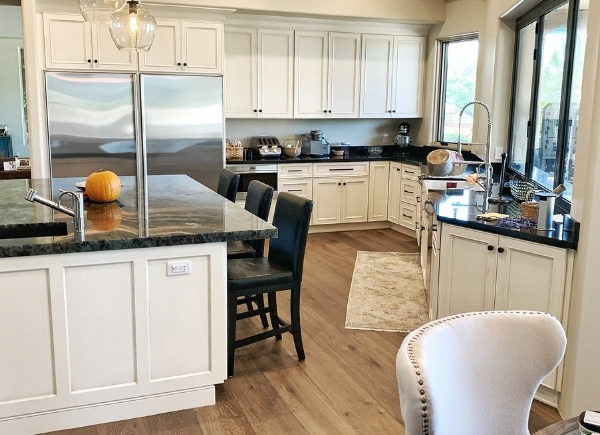
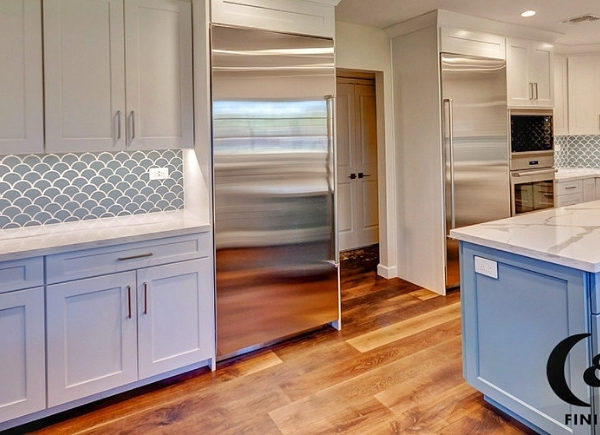
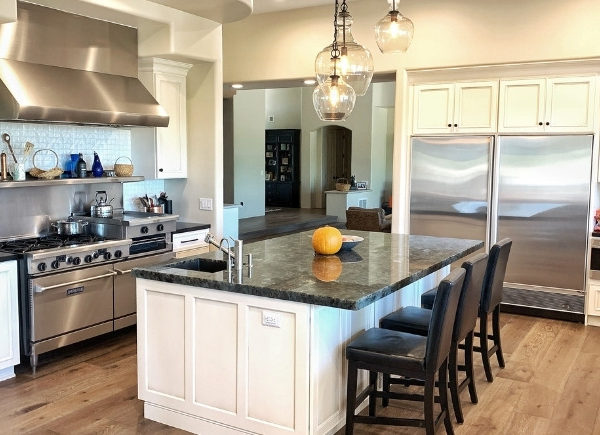
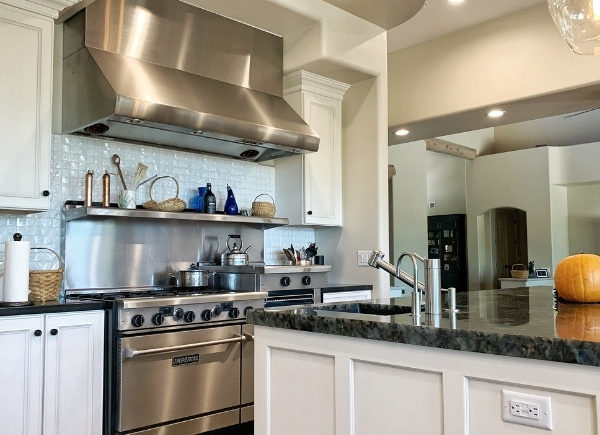
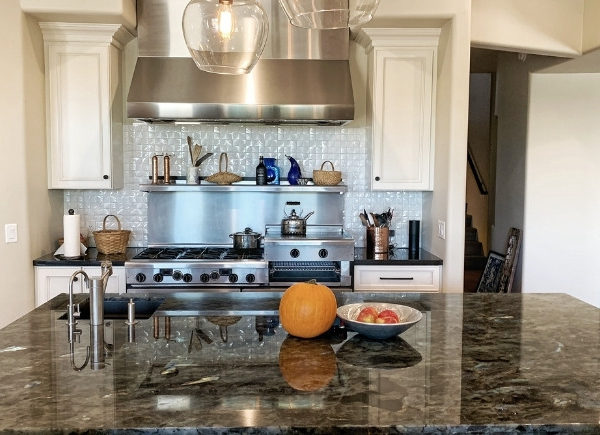
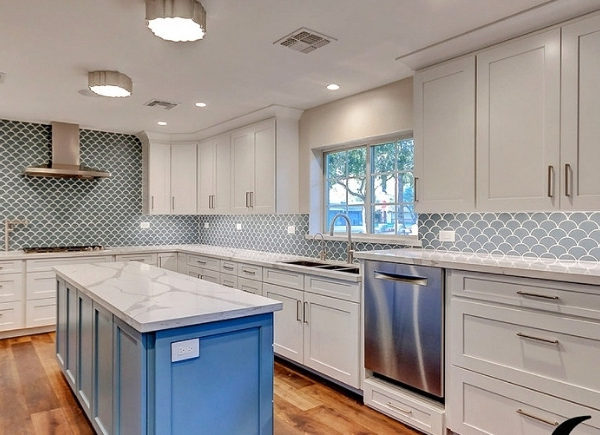
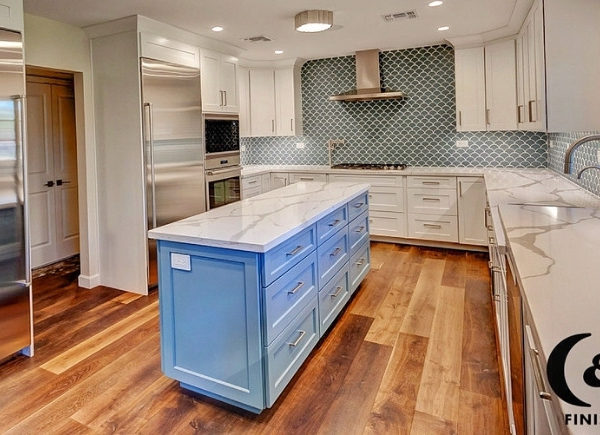
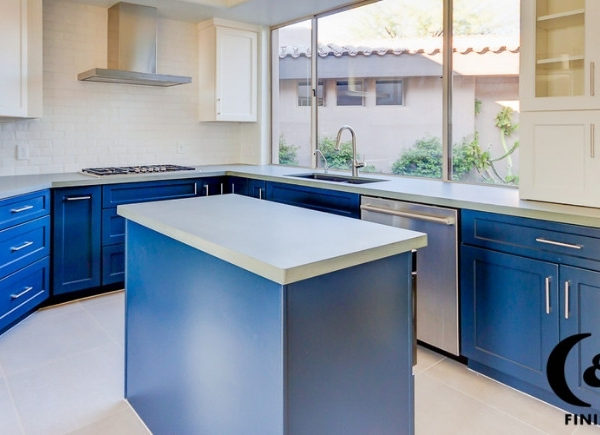
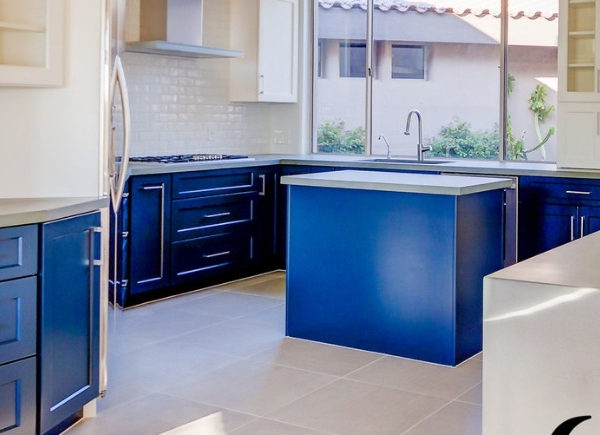
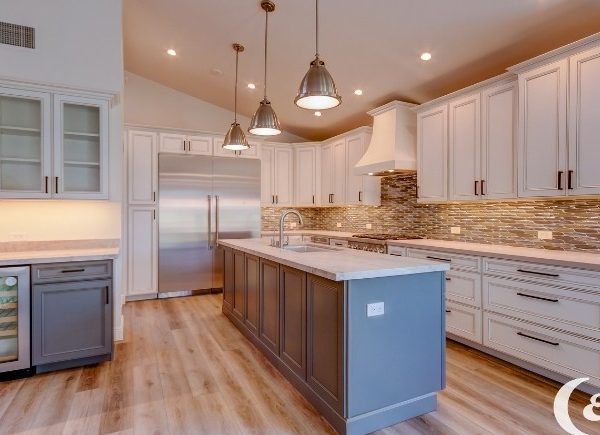
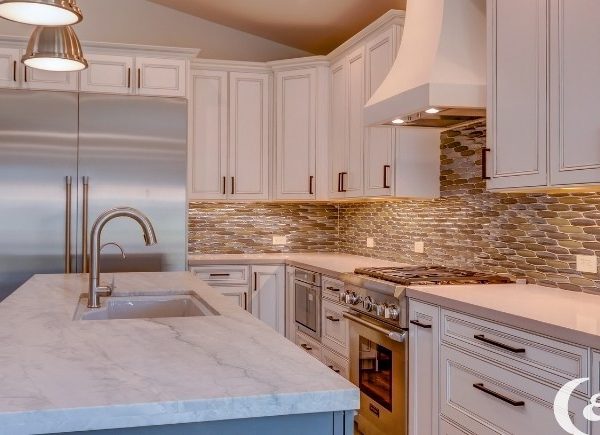
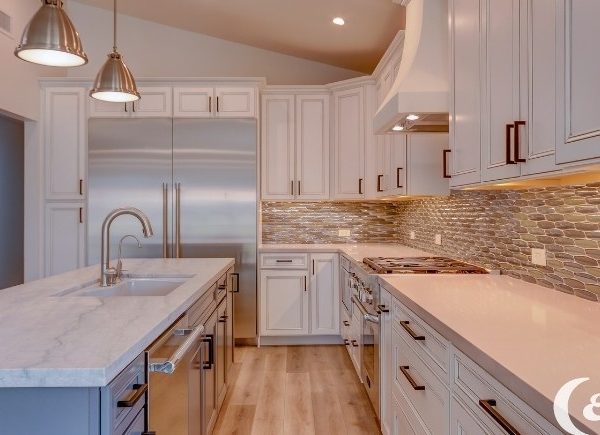
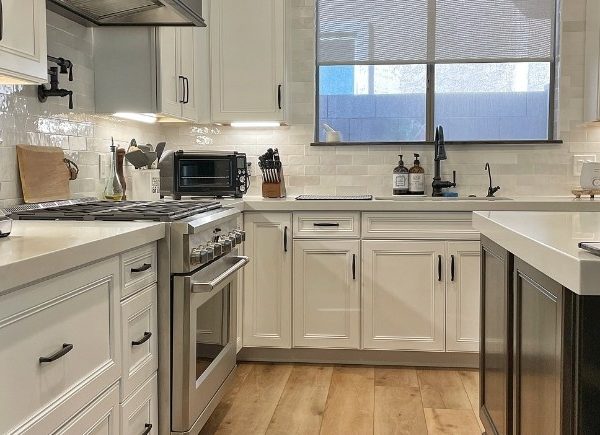
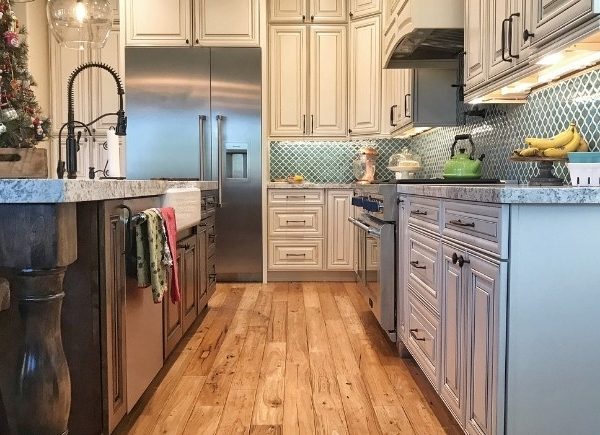
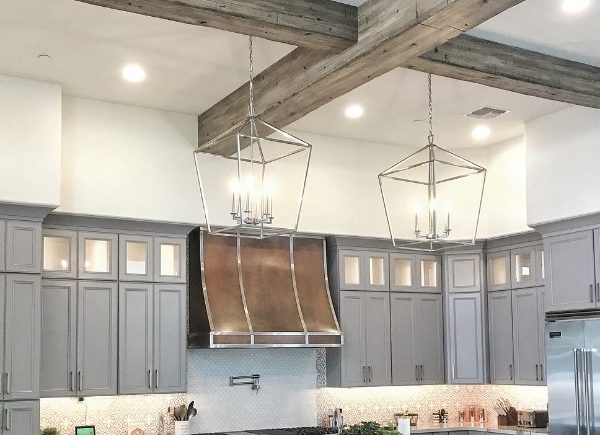
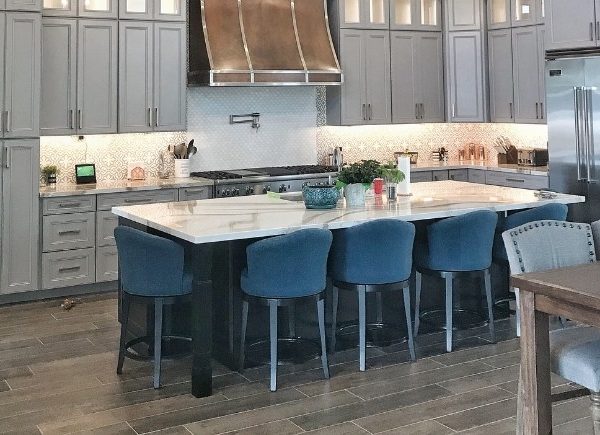
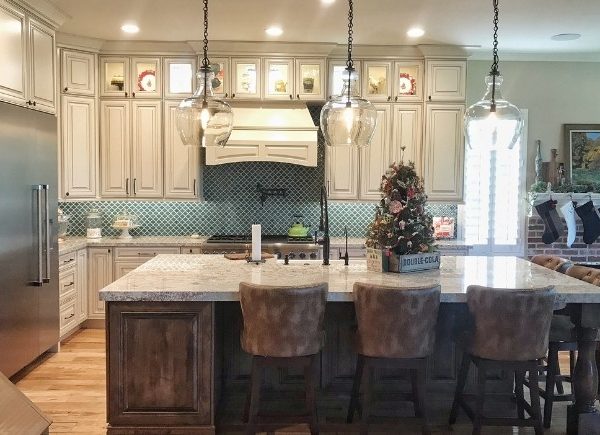
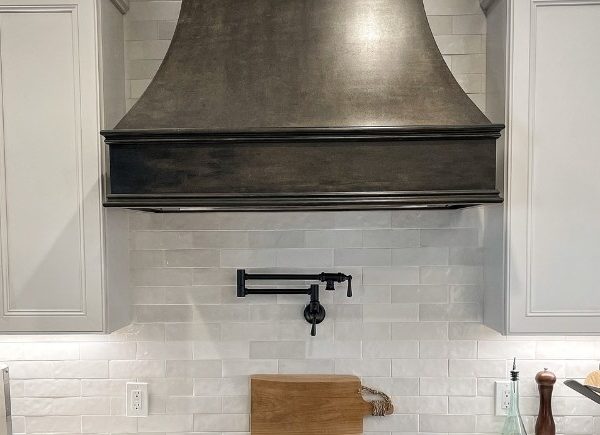
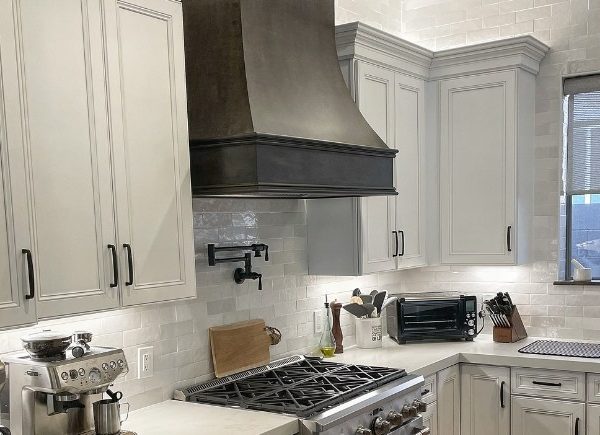
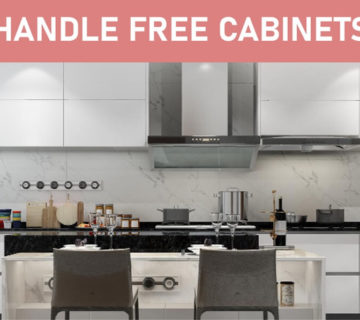


[…] can easily take up close to half your kitchen budget, so it’s important to go in knowing exactly how much you can spend on them. If you’re trying to save on the budget and your new kitchen redesign isn’t too […]